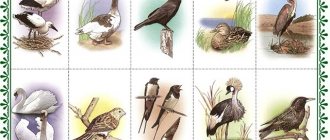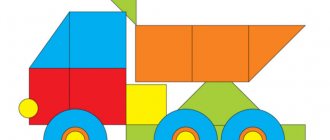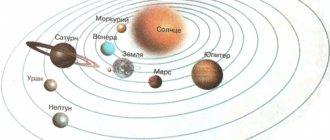On the topic: methodological developments, presentations and notes
GCD for modeling in the second junior group for children with visual impairments.
Summary of a drawing lesson in the first junior group “Merry Sun”.
Teach children to draw a circle, finger strokes on semolina, depicting the sun and grass.
teach children to sculpt toys consisting of parts of the same shape, but of different sizes. Show how to divide a piece of plasticine into parts using stacks.
Notes on object modeling in the second junior group on the topic: “Merry Tumbler” Goal: to teach children to sculpt toys consisting of parts of the same shape, but of different sizes. Show sp.
Goal: To teach children to carefully paste on the details of the image. To develop a sense of composition: to arrange appliqué elements throughout the entire form. To teach them to understand and analyze the content of the poem.
Teach children to group objects by color and size.
Source
On the topic: methodological developments, presentations and notes
Technological maps for the second junior group under the Rainbow program.
This activity helps the child immerse himself in the world of toys, the world of childhood. It uses various methods and techniques to present the material, which will make it easier for children to learn information.
Directly organized educational activities with children of the second junior group. Integration of educational areas “Cognitive development”, “Artistic and aesthetic education”.
For working with children of the 2nd junior group. Drawing balls through play activities.
Technological map of the lesson Summary of joint activities of adults and children in visual arts in the second junior group Topic: Turnip Integration of educational areas: artistic and aesthetic.
Technological map for the second junior group Application “Rug for a cat”.
Technological map for the second junior group, non-traditional drawing technique “Funny balls.
Source
Preview:
MBDOU "General developmental kindergarten with priority
implementation of activities for the social and personal development of children
No. 8 "Rodnichok" urban district "city of Yakutsk"
Technological map for the second junior group
Vladimirova Alena Ilyinichna
Goal: teaching children to distinguish between quantities of different sizes.
Educational: learn to draw a tumbler consisting of balls of different sizes; create an emotional interest in the lesson;
Educational: cultivate perseverance, discipline, accuracy in work; instill aesthetic feelings.
Developmental: fix the round shape of body parts (eyes, nose, hands, mouth,)
Equipment: tumbler doll, colored pencils, ½ hour of landscape paper.
Materials, game center
In the kindergarten group, using a tumbler.
Surprise moment tumbler. Creating a problematic situation.
Children, a tumbler doll came to visit us today. Look how beautiful she is. But she's kind of sad. What happend to you? Don't you like it here?
The teacher pays attention to the tumbler
Joint goal setting (action plan)
Tumbler: Yes, no, you are fine here. But I’m sad without my tumbler friends, I want you to draw them for me. Will you draw?
Actions (managing children's activities)
Productive and reproductive issues
Then we will first take a close look at the tumbler. Here is her body, here is her head. What are these children?
— what shape is the body?
-What shape is the head?
- That's right, guys. How big is the torso?
Tumbler: I listened to you, you know everything, and I think you will draw my girlfriends beautifully.
Shall we try, children? (Yes)
Guys, let's draw the body of the tumbler (the largest circle), the smaller circle will be the head.
- Guys, what else is left to draw?
- Well done, right! But before we continue drawing, let's play.
Hands up into a fist,
Hands down on the side,
Let's do it like this.
- What kind of hands does the tumbler have?
two identical small circles.
Tumbler: Now draw my friends eyes, cheeks and mouth
- What wonderful tumblers they turned out to be. To make the tumblers elegant, all we have to do is color them.
- Let's take a photo together now.
Result (result, reflection)
Positive pedagogical assessment.
Tumbler: You are probably tired, and now it’s time for us to say goodbye, kids.
- great guys, me and the tumbler really liked how you made girlfriends for the tumbler.
Children say goodbye to the tumbler doll.
Synopsis of the educational activity “Tumbler DOLLS VISITING THE GUYS. HOLIDAY PHOTO FRAMES" for children of the 2nd junior group
Transcript
1 Abstract of the educational activity “Tumbler DOLLS VISITING THE GUYS. HOLIDAY PHOTO FRAMES" for children of the 2nd junior group. Integration of educational areas: "Cognition" (formation of elementary mathematical concepts), "Communication", "Socialization", "Music", "Artistic creativity" (drawing). Types of children's activities: play, communication, cognitive research, productive. Goals of the teacher’s activities: Educational: - to introduce the technique of drawing with a stencil; learn to paint with gouache using a sponge blank; - activate the dictionary on the topic “Dishes”, “Furniture”; - exercise the ability to compare objects by size using the application method; - practice performing rhythmic movements to music; - fix the names of the primary colors. Developmental: - develop mental processes (memory, speech, imagination). Educational: - cultivate responsiveness, desire to provide assistance; - cultivate accuracy and independence. Planned results for the development of integrative qualities of a preschooler: listens with interest to the riddle about the tumbler, examines the dolls; shows emotional responsiveness to requests for help from tumblers; examines with interest objects of dishes and furniture, names them; correctly determines the size of objects, using the words “big”, “small”; shows positive emotions to the song “Tumblers”, performs rhythmic movements to it; knows the names of primary colors (blue, red, green, yellow); neat and independent when creating an individual composition in the drawing “Holiday photo frame for tumblers.” Materials and equipment: two tumblers (large and small), a holiday package, a toy truck, tableware (two mugs, two plates, two frying pans, etc.), furniture (two tables, a chair, an armchair, two cabinets), red gouache, yellow - 1
2 togos, blue and green; paper photo frames, tumbler stencils, sponge blanks, napkins (according to the number of children). Repertoire: song “Tumblers” (music by 3. Levina, lyrics by 3. Petrova). Contents of children's organized activities 1. Organizational moment. - Guys, look at the beautiful package I have in my hand. It contains a toy. But I won't tell you its name. Try to guess for yourself what is there by listening carefully to the riddle. Left to right, Left to right Swings merrily. Left to right Left to right Doesn't fall on the floor. (Tumbler.) - Let's check if you're right. (Opens the package and takes out a tumbler.) That’s right, this is a tumbler, her name is Alenka. Children, say hello to Alenka. - Guys, why do you think they called her a tumbler? (Does not lie around, does not fall). Tumbler bent down, But he wouldn’t fall, even if someone inadvertently pushed Tumbler in the side. Someone will push the toy to the side and in response you will hear a ringing sound. I wonder why suddenly there was a chime? So, guys, that's why the tumbler and the tumbler are that they never fall or lie around. Oh, guys, there's another tumbler in the bag. (Takes out another one.) This is Alenka’s sister, her name is Mashenka. Look, there was one tumbler, Alenka, but now how many are there? (Two.) Let's compare the tumblers in size. To do this, let's put them side by side. Dasha, show me where the big tumbler is and where the small one is. (The girl shows.) 2. Game “Distribute the dishes and furniture.” — The children, Alenka and Masha are going to move to a new apartment. And today the truck brought some dishes and furniture for them. But the sisters just can’t figure out what dishes are needed for each of them and what furniture should be 2
3 stand in each room. Shall we help them sort out and distribute the items? (Places all the items on the table.) - Igor, please come to the table Find the plates Show which plate is big and which is small Which tumbler will we give the big plate to big Alyonka or little Mashenka? (We’ll give the big plate to the big tumbler, the small plate to the little tumbler.) - Artem, please come over. Find the mugs on this table Show which mugs are big and which are small How should these mugs be distributed among the tumblers?.. - Egor, come please. Find the frying pans on this table. Show me which frying pan is large and which is small. Shall we give the large frying pan to which tumbler?.. And the small one to whom? - So, we distributed the plates, mugs and pans. How can these objects be called in one word? (Dishes.) - Zhenya, find the tables on this table Show which of the tables is large and which is small How should these tables be distributed among the tumblers? -rhythmic movements. - Guys, while we were distributing dishes and furniture, the tumblers became a little depressed. Let's cheer them up. There is a funny song about tumblers, which is called “Tumblers”. Let's dance to it, and the tumblers will look at us. Children perform rhythmic movements to the song “Tumblers” (music by Z. Levina, lyrics by Z. Petrova). Ding dong, dili dong, What is this strange chime? (Gesture of surprise.) He can be heard from all sides, (They put their hands to their ears.) Dili, dili, dili-don! We are cuties, (Imitate with hands how tumblers “hold on to handkerchiefs.”) Bright shirts. (Turn.) We don’t sleep, we don’t sit (They put their hands on their head tilted to the side; they sit down.) And we don’t want to go to bed, (They shake a finger.) Day and night we stand, 3
4 We are ringing very cheerfully. (They imitate with their hands how tumblers “hold on to handkerchiefs.”) Bright shirts. (Turn.) Oh, once again, (Tilts to the sides.) We will bend over now, Let's start dancing, (Put their feet on the heels.) We will try for you. (They spread their hands.) We are cuties, (They imitate with their hands how tumblers “hold on to handkerchiefs.”) Bright shirts. (Rotate.) 4. Drawing “Festive photo frame for tumblers.” - Guys, the tumblers will have a birthday soon. Let's prepare gifts for them. (Children's answers.) I suggest making holiday photo frames for my sisters. Look, I already have frames, all I have to do is insert a photo of Alenka and Mashenka into them. Now I’ll show and explain how we’ll do this. Children take their places at the tables. — Do you see that there are places on my frame to insert a photo? Here in these empty spaces I will draw tumblers. I will draw little Mashenka in a small window. And through the big window, big Alenka. But I will draw tumblers in an unusual way. The teacher dips the sponge blank into the paint and applies it to the white part of the sheet (not covered with film). Then he dips it in paint again and applies it to the paper again, and so on, until the tumbler becomes colored. Draws attention to the force of pressing the sponge on the paper, the accuracy of the drawing process. Then plates with paint, sponge blanks and frames are distributed to each child, and the children complete the task. The teacher controls the work methods and provides assistance to those who are experiencing difficulties. Those children who finished drawing earlier are asked questions (“What color are your tumblers?”, “Show me where the small tumbler is and where the big one is.”) After finishing the work, the teacher shows all the children and the tumbler how beautiful the work turned out, that the guys tried, praises them for their efforts. 5. Reflection. Guys, did you like today's lesson? Who came to visit us? (Tumbler dolls.) 4
5 How did we help the tumblers? (They helped distribute the dishes and furniture.) Who remembered the name of the song we danced to? (“The tumbler dolls”; they can sing individual lines if desired.) What have we prepared as a gift for the tumbler dolls? (Holiday photo frames.) Tumbler: You painted and danced so much today that you were probably tired, And now it’s time for us to say goodbye, kids. The children say goodbye to the tumbler dolls; the teacher offers to hang the children’s work on the stand for now so that it dries completely. 5
6 List of used literature FROM BIRTH TO SCHOOL. Basic general education program of preschool education / ed. NOT. Veraksy, T.S. Komarova, M.A. Vasilyeva. M.: MOSAIC-SYNTHESIS, p. Internet sources:



